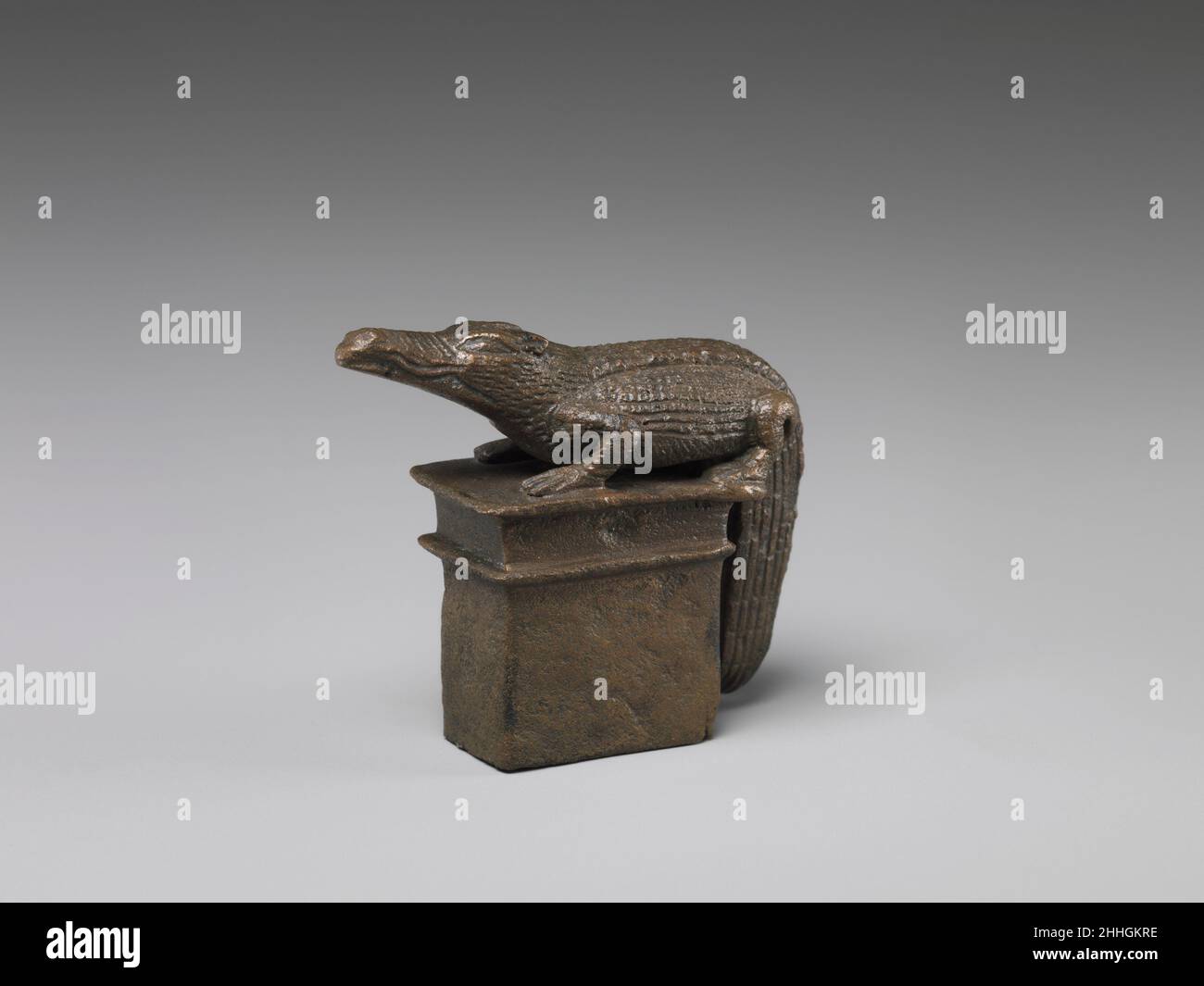Crocodile on a shrine-shaped base 332–30 B.C. Ptolemaic Period A crocodile on a shrine represents the god Sobek. Sobek was an important god throughout Egypt, and with important cult centers in both Upper Egypt and the Fayum. Associated with the Nile floods and fertility, Sobek's centrality in the Fayum led to his being associated with royal power during the Middle Kingdom, and then directly with the god Re. By the Ptolemaic period, he was identified with numerous deities, taking on the aspect of a universal god.. Crocodile on a shrine-shaped base. 332–30 B.C.. Cupreous metal. Ptolemaic Period.

Image details
Contributor:
MET/BOT / Alamy Stock PhotoImage ID:
2HHGKREFile size:
34.3 MB (562.9 KB Compressed download)Releases:
Model - no | Property - noDo I need a release?Dimensions:
4000 x 3000 px | 33.9 x 25.4 cm | 13.3 x 10 inches | 300dpiDate taken:
22 January 2022More information:
This image is a public domain image, which means either that copyright has expired in the image or the copyright holder has waived their copyright. Alamy charges you a fee for access to the high resolution copy of the image.
This image could have imperfections as it’s either historical or reportage.
Crocodile on a shrine-shaped base 332–30 B.C. Ptolemaic Period A crocodile on a shrine represents the god Sobek. Sobek was an important god throughout Egypt, and with important cult centers in both Upper Egypt and the Fayum. Associated with the Nile floods and fertility, Sobek's centrality in the Fayum led to his being associated with royal power during the Middle Kingdom, and then directly with the god Re. By the Ptolemaic period, he was identified with numerous deities, taking on the aspect of a universal god.. Crocodile on a shrine-shaped base. 332–30 B.C.. Cupreous metal. Ptolemaic Period. From Egypt